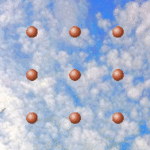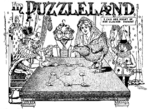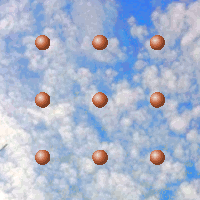Thinking outside the box
Thinking outside the box is a catchphrase or cliché that is used by management consultants and advertisers to further their own ends. ![]() cDonalds™ are now supporting out of the box thinking with their new Happy Meal slogan "You'll love it out of the box."
cDonalds™ are now supporting out of the box thinking with their new Happy Meal slogan "You'll love it out of the box."
It is a phrase that would not have entered common English parlance except that these are the people who tell you how to think. ![]() Nike™ Just doing it out of the box. This phrase often is intended to refer to novel, creative and smart thinking, however most often relates to a reused slogan and/or thought that has be rephrased differently in order to make it appear novel, creative or smart.
Nike™ Just doing it out of the box. This phrase often is intended to refer to novel, creative and smart thinking, however most often relates to a reused slogan and/or thought that has be rephrased differently in order to make it appear novel, creative or smart.
Origin[edit]
There are a number of disputed origins of the phrase out of the box.
Entymologists, who are people who study the history of words and stuff, believe that the phrase out of the box relates to the Nine Dots puzzle, where the puzzlee is presented with nine dots in a grid pattern by the puzzler and told to join them all using only four lines, etc. The puzzlee then comes up with a viable solution and is told by the puzzler that they have done it wrong because they forgot to mention an extra rule. This continues until the puzzlee thinks creatively, and then stabs the puzzler with the pen until the puzzler gives in and gives them the answer.
™ The earliest claimed reference to this is relating to ![]() ™. The Disney people claim that the nine dots puzzle was used in-house by the great man himself, Walt Disney. Often he would show people the nine dot puzzle (pictured) and ask them to work out the answer. When they couldn't he would often scream "What? And you call yourself a creative team? I will lock you in this trunk until you come up with a new idea, and then, and only then, will I let you out of the box" and would then proceed to beat on the sides and the top of the box with his "Magic Wand." There has been some doubt thrown upon this as it seems unlikely that the Disney company, the writers of "Tarzan", "Beauty and the Beast", "Cinderella" and many more are capable of coming up with an original idea that hasn't been taken from folklore or somebody else's work.
™. The Disney people claim that the nine dots puzzle was used in-house by the great man himself, Walt Disney. Often he would show people the nine dot puzzle (pictured) and ask them to work out the answer. When they couldn't he would often scream "What? And you call yourself a creative team? I will lock you in this trunk until you come up with a new idea, and then, and only then, will I let you out of the box" and would then proceed to beat on the sides and the top of the box with his "Magic Wand." There has been some doubt thrown upon this as it seems unlikely that the Disney company, the writers of "Tarzan", "Beauty and the Beast", "Cinderella" and many more are capable of coming up with an original idea that hasn't been taken from folklore or somebody else's work.
John Adair™, one of the "leading authorities on leadership and leadership development"[1], claims to have introduced the phrase in 1969. However the claims of introducing this in 1969 come from his 2007 book The Art of Creative Taking[2]. As his claims are made long after the cliché has become a cliché, it appears his claims can be dismissed, but they do exhibit a certain amount of out of the box thinking.
™ Taco Bell™ have often used their own version of the cliché out of the box by advising their staff and customer's to think outside of the bun. The concept here was initially that whatever came out of the buns was suitable to be placed back into buns, and hence created their recyclable approach to international food shortages.
Nine dots puzzle[edit]
Although the slogan appears to be a fairly recent invention, the puzzle itself appears to harken back to a much earlier and more innocent time. It appears in the the 1951 compilation The Puzzle-Mine: Puzzles Collected from the Works of the Late Henry Ernest Dudeney, the puzzle is attributed to Dudeney himself. At it's peak this excited and rocked the world, as it seemed to shine a completely new and innovative way of thinking, of going out of the box. Unfortunately later discoveries of an earlier manuscript, Sam Loyd's™ 1914 Uncyclopedia™ of Puzzles, also has the puzzle in it, showing that Dudeney did in fact think out of the box and take the concept from somewhere else.
The original text for the puzzle in the Sam Loyd™ version is: Little Tommy Riddles calls attention to a plucky young chicken, named "America Sespecious™" after whom our great country is named. In this puzzle he asks King Puzzlepate, the anachronism of our colonised past, to draw a continuous line through all of these eggs so as to mark them off with the fewest number of strokes. King puzzlepate does this firstly with six lines, and the chicken laughs at him and tells him it's not good enough. Next the king does it with one very thick line, at which our auspicious chicken laughs. Then he moves all the eggs together so it can be done in one line, at which our valiant chicken laughs. The king is going out of his mind. What ho! It looks at though the king will be having Cordon Bleu™ tonight!"
![]() ™ Coke™ Also believes that it has some of the background story to this, and it is suspected that Sam Loyd wrote the original while drinking Coke. Ah, that refreshing taste and the subtle buzz of cocaine and kola nuts helped him to write this out of his head puzzle.
™ Coke™ Also believes that it has some of the background story to this, and it is suspected that Sam Loyd wrote the original while drinking Coke. Ah, that refreshing taste and the subtle buzz of cocaine and kola nuts helped him to write this out of his head puzzle.
Alternative phrasing[edit]
Although out of the box is a common cliche in most of the world[3] there are many other variants worldwide.
- Outside of the square is the more common phrasing in the UK
 ™[4]..
™[4].. - Open the kimono is take from Japan
 ™ where it is customary for the older men to go to the girls schools and open their kimonos to show the lovely surprises inside.
™ where it is customary for the older men to go to the girls schools and open their kimonos to show the lovely surprises inside. - Out of the esky is common in Australia
 ™ and New Zealand
™ and New Zealand  ™ where all they seem to do is drink beer[5]
™ where all they seem to do is drink beer[5]
Summary[edit]
Although often considered to be a cliché that relates to innovative thought and originality, it is more often seen when being used as a covering for plagiarism and intellectual property theft. It seems that almost anything that relates to out of the box is generally taken predominantly from one source and only slightly altered in order to make it look like original work.
| This page was originally sporked from Wikipedia. |
See also[edit]
- Lateral thinking puzzle
- Lateral Thinking
- Parallel Thinking
- HowTo:Solve The 1x1x1 Rubik's Cube
- Shopping list
- Jigsaw Puzzle
- Puzzle potato
- Gordian Knot
References[edit]
- ↑ John Adair - Leadership & Management retr. 29/06/2009. Yes, he must be an authority, he says it himself on his own website.
- ↑ John Adair, The Art of Creative Taking: How to Cash in on the Works of Edward de Bono (Plagiarism publishing company, 2007)
- ↑ ie. Only within the United States of America.
 ™
™
- ↑ Because it's a 2 dimensional shape, don't you know, what. Tally ho. Tea and biscuits.
- ↑ Mate.




